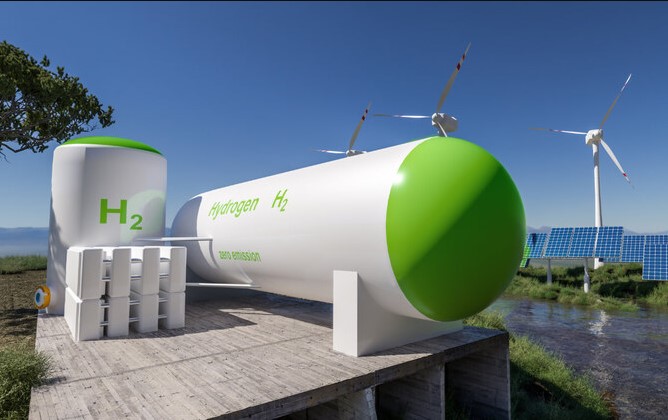India is an agrarian economy with a need to ensure availability of fertilizers for productive farming operations and food production. It is also the world’s second largest consumer and third largest manufacturer of fertilizers.
Fertilizer production in India has witnessed a surge over the years, from having an annual production of 22.23 MMT (million metric ton) in 1990-91, it has grown to 43.66 MMT in 2021-22. Fertilizers are used to improve and supplement the demand for nutrients in the topsoil essential for plant growth.
The Central government has been working on ways to boost the use of green hydrogen in the oil refining and fertilizer production sectors. It is committed to replacing grey hydrogen with green hydrogen.
India has expressed its goal to make India a global hub for green hydrogen production and export. The National Hydrogen Mission, a step in this direction, also proposes a framework for creating demand for green hydrogen in sectors such as petroleum refining and fertilizer production. In addition to that, it also supports indigenous manufacturing of critical technologies; research, and development activities; and provides an enabling policy and regulatory framework.
Why Green Hydrogen?
The traditional form of hydrogen is produced from fossil fuels. Burning of fossil fuel leads to carbon emissions, which contribute to global warming. On the other hand, green hydrogen or eco-friendly hydrogen is a zero-carbon fuel made by electrolysis, using renewable power from wind and solar to split water into hydrogen and oxygen.
Traditionally, the fertilizer industry runs on coal, (a non-renewable resource) and the demand for it has been increasing. Meanwhile, India is also committed to a green climate and is working towards energy transition. Green hydrogen address both the goals.
Green hydrogen is generated by breaking down water in an electrolyzer. The hydrogen produced can be combined with nitrogen to make ammonia, avoiding hydrocarbons in the production. Green ammonia is used to store energy and in fertilizer manufacturing.
Making India Atmanirbhar in fertilizers
The Fertilizers Ministry is up for making the sector self-reliant, reducing imports, and increasing exports. To do so, the Government has been making several efforts.
Promoting nano urea: In July 2021, National Fertilisers Limited (NFL) and Rashtriya Chemicals and Fertilisers Ltd (RCF) signed a Memorandum of Understanding (MoU) with Indian Farmers Fertiliser Cooperative Limited (IFFCO) for the transfer of technology of Nano Urea Liquid.
The Government has been promoting the use of nano urea due to its several benefits, such as benefits to the environment, reduction in transportation and storage cost, and more. Moreover, the government also ensured the availability of fertilizers to the farmers during Kharif 2021 season and constantly reviewed the process.
Nano urea reduces the use of urea by up to 50% percent. According to Union Minister Mansukh Mandaviya, nano urea will also reduce the import of conventional urea in India and contribute towards Atmanirbhar Bharat in the fertilizers department.
In July, 2021, the Union Fertilizer Minister had informed that India is also exploring indigenous deposits of phosphatic rock, a step towards becoming Atmanirbhar in fertilizer production. Phosphorus is very important for the production of fertilizers for agriculture.
Phosphate reserves, if found, can help in reducing the import dependency India has at present and can also boost the domestic fertilizer industry.
Target 2023
India is gearing up to become self-reliant in the production of fertilizers by 2023. To achieve the target, new fertilizer manufacturing units are being set up with an investment of Rs 40,000 crore in the country to reduce dependency on imports.
Notably, the Niti Aayog has identified green hydrogen as critical to India’s net-zero ambition. It has estimated the cumulative value of the green hydrogen market in the country at $8 billion by 2030. Over the next decade, the government plans to add 175 GW of green hydrogen-based energy.
Green hydrogen for ammonia synthesis in fertilizer manufacturing can support the net-zero vision for India by 2070. It can enable the transition of the fertilizer industry from fossil fuels and wean away dependence on imported natural gas and ammonia. This transition will require significant investment for various infrastructural additions for adoption of green hydrogen in the fertilizer industry.




